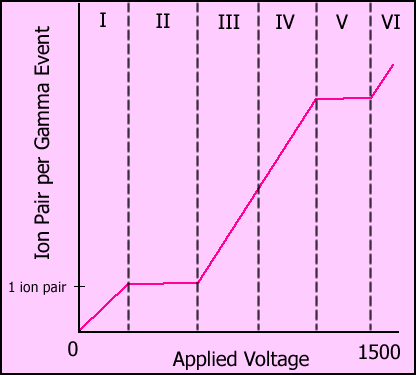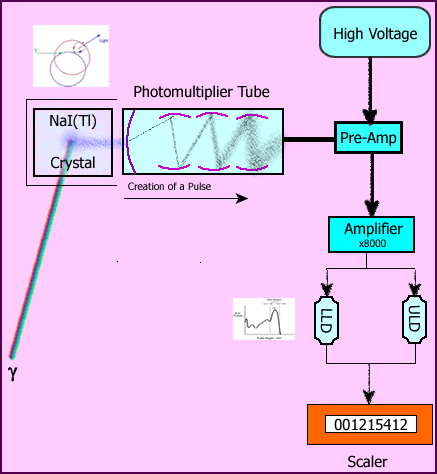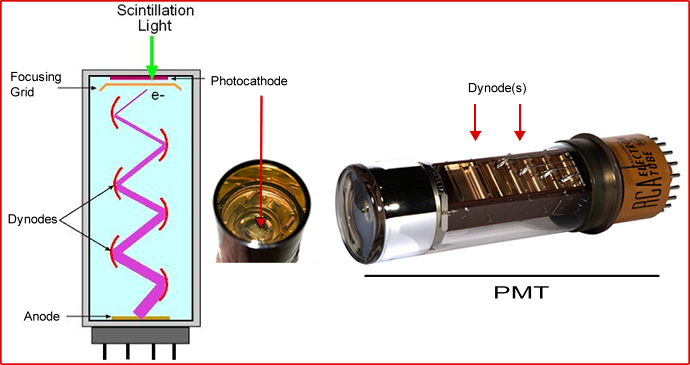- Pulse height
- Once light has been converted to electrons the purpose of our imaging system is to magnify the pulse height
- As the electrons move through the system, proportionally, the pulse height continues to increase
- Pre-Amplifier (Pre-Amp)
- PMT(s) are hard wired to the rest of the imaging/counting system
- Impedance is applied which slightly reduce the pulse height in order to prevent noise in the system
- Have you ever heard a "buzzing" sound coming from a sound system?
- What might that sound like? Link
- It does not amplify the pulse height
- Amplifier
- Pulse height reaches the amplifier, it will be amplified as much as 8000 times
- This generates a spectrum (of energy) that contains the energy from the gamma-ray(s) recorded from the initial scintillation of the crystal
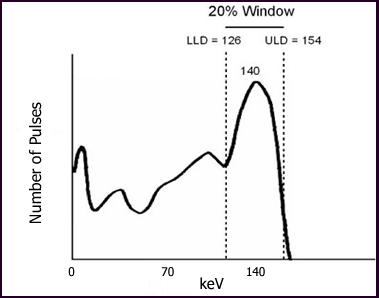
- Reading the energy peak - Pulse Height Analyzer (PHA) contains lower and upper level discriminators (LLD and ULD) are seen in the above graph
- LLD and ULD sets a window in which the pulse will be recorded or rejected
- Any pulse that is below the LLD is rejected
- Any pulse that is above the ULD is rejected
- Only the pulses that are between the LLD and ULD are allowed to continue through the system
- An electron pulse that falls within the LLD and ULD is recorded
- Diagram shows a window set at 20% around 140 keV gamma (99mTc)
- Calculate the LLD and ULD settings for a 140 keV gamma with a 20% window
Step 1 - 20% / 2 = 10%
Step 2 - Convert 10% to 0.1
Step 3 - 140 * 0.1 = 14 keV
Step 4 - Fourteen above the peak is (140 + 14 =) 154 keV is the ULD setting and fourteen below the peak is (140 - 14 =) 126 keV and that is the LLD
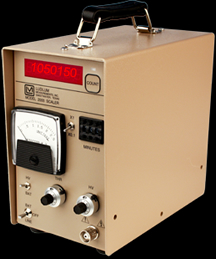
- Reading the gamma event
- The imagine above is known as a "scaler" device and it only records gamma events
- Usually recorded in counts per second (cps) or counts per minute (cpm)
- Can be set to preset time - Ex. How many counts were collected over 5 minutes
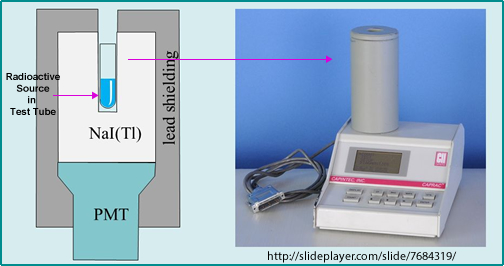
- When you collect gamma counts with a well counter a source of radioactivity is placed inside the chamber and the amount of radioactivity is recorded
- This device is also used to determine removable radioactive contamination, which is referred to as a wipe test
- Gamma camera records gamma events with a location of a x/y axis or 2-dementional (next lecture)

